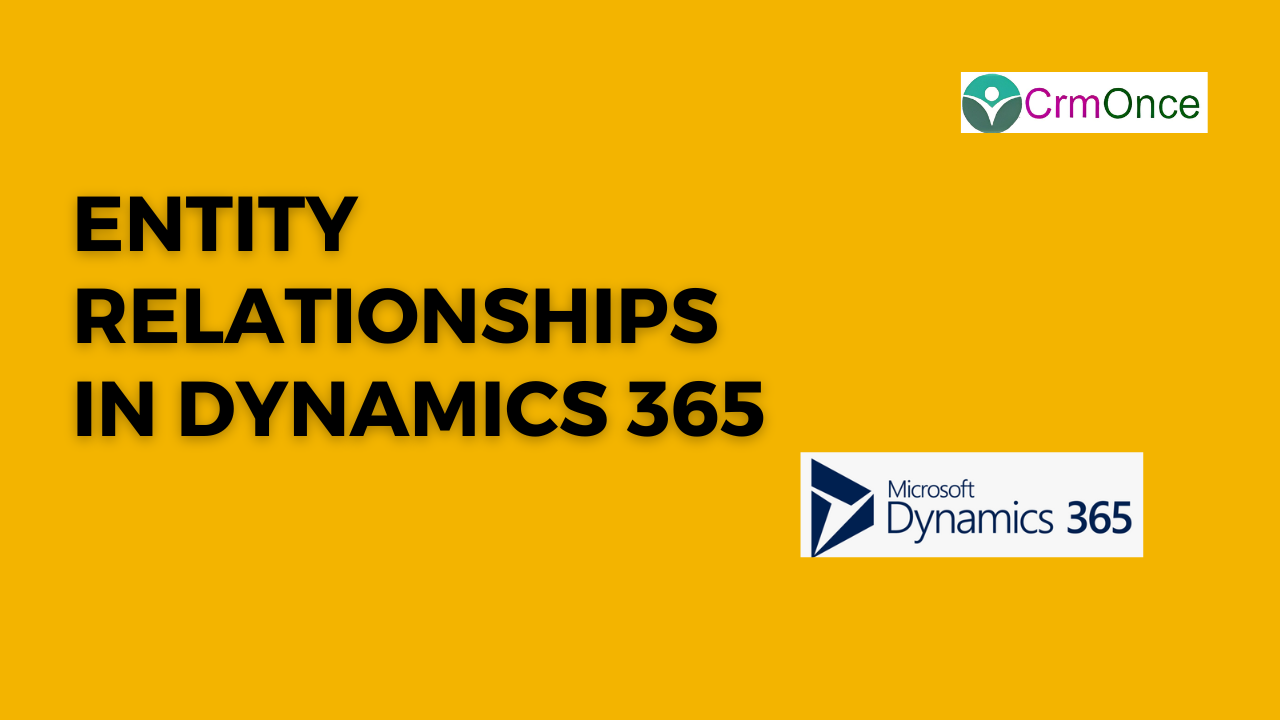- Relationships are connection between two entities.
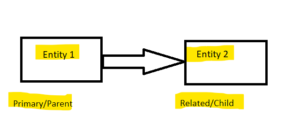
Types of entity relationship in Microsoft CRM.
There are three types of relationships in Microsoft Dynamics 365 which are listed below. They are:
- 1:N (One-to-Many) relationships.
- N:1 (Many-to-One) relationships.
- N:N (Many-to-Many) relationships.
- 1:N (One-to-Many) relationships Microsoft Dynamics 365 CRM :-
Entity Relationship defines how records can be related to each other in the database. Adding a lookup field to an entity creates a new 1:N (one-to-many) relationship between the two entities. With the lookup field, One parent record is associated with many child records. Basically, it forms the parent-child relationship. A parent object can have many child objects but a child object must have only one parent object.

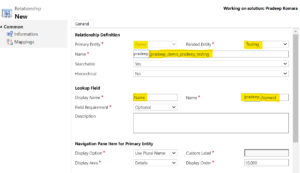
- N:1 (Many-to-One) relationships Microsoft Dynamics 365 CRM:-
With an N:1 relationship, the primary entity is the one you select. Therefore, the entity you are customizing is the related entity.
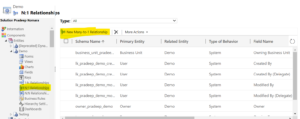
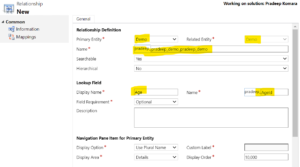
- N:N (Many-to-Many) relationships Microsoft Dynamics 365 CRM:-
With an N:N relationship, there is not one primary entity and another secondary or related entity; rather, they both act as both types.
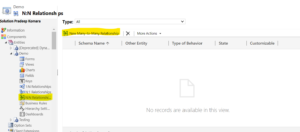

Relationships behaviour in Microsoft Dynamics 365 CRM :-
There are four types of Entity Relationships in Microsoft Dynamics 365 those are listed below.
- Parental
- Referential
- Referential, Restrict Delete
- Configurable Cascading
1. Parental :-
In parental relationship between two entities, any action taken on one record of the parent entity it is also taken on any child entity records that are related to the parent entity record. if you delete a record in the parent entity, the related child entity records are also deleted; or if you share a parent entity record, the related records from the child entity are also shared. All options are disabled for Parental relationship.

2. Referential : -
In referential relationship between two entities, you can navigate to any related records, but actions taken on one will not affect the other.

3. Referential, Restrict Delete : -
Actions taken by the parent will not affect the child record but the parent record cannot be deleted till the child record exists. i.e you cannot delete a record when related records exist.

4. Configurable Cascading : -
- The type we are interested in here is “Configurable Cascading”. It allows you to decide what type of behavior we need to apply.
- The useful details of different cascading rules are (note here that is referred to the user on whom you will perform actions).

- They are four types of Cascading Rules : -Off of these Actions, are Cascading Rules. These are various Rules that are active within the system:
- Cascade: All – The change will flow down to any child record
2. Cascade: Active Records – The change will flow down to any active child record
3. Cascade: User-owned – The change will flow down to any child record owned by the same user as the parent
4. Cascade: None – No cascading will take place
For any Help or Queries Contact us at info@crmonce.com or +918096556344

